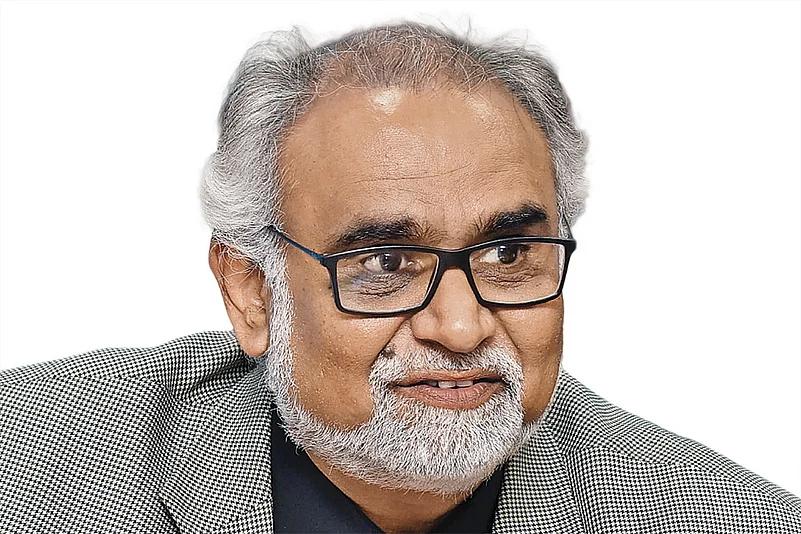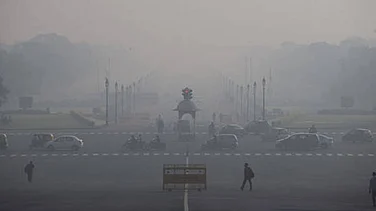In Indian culture, rivers are not seen merely as geographical entities. Instead, they are revered as social and cultural symbols. Rivers have always been an integral part of our lives, treated as living beings. We see them as family members, as the giver of life, granting them the status of a goddess. In this way, rivers in Indian tradition are inseparable from social life. Many rivers in our country, flowing with their sacred streams, are more than just sources of water. They are woven into the fabric of our existence, and we see them through this lens.
Water and rivers play an essential role in our lives. They are not only critical to the formation of cultures, but they also give rise to a unique culture centred around them. Indian culture shares an emotional connection with rivers, far deeper than just a natural resource.
Here, rivers are worshiped as mothers, sisters or goddesses. Rituals, like adorning rivers with jewellery or vermilion, are part of this relationship. The famous Ganga aarti is not performed just because the Ganga is life-giving or a giver of salvation, but because offering obeisance to rivers used to be a significant part of Indian daily life.

The ancient prayer, Gange Cha Yamune Chaiva, Godavari Saraswati Narmade Sindhu Kaveri Jalesmin Sannidhim Kuru, which is often recited in homes, expresses the wish that the water from these sacred rivers purify the soul and elevate the purpose of life.
Rivers such as the Ganga, Yamuna and Saraswati have been integral to the development of Indian civilisation since ancient times. The Rigveda speaks of the importance of rivers, comparing them to nurturing mothers. The Indus Valley Civilization flourished along the banks of the Indus river, where cities such as Mohenjo-Daro and Harappa thrived due to their proximity to water sources. This bond between people and rivers was not merely geographical but spiritual, as rivers were seen as sustainers of life and cultural identity.
Unfortunately, over time, Indian society also began viewing rivers through a different lens, reducing their significance to mere geographical units. We have built dams, altered the courses of rivers and even turned perennial rivers into mere lines on a map. Many rivers, once the backbone of trade and transportation, are now on the brink of extinction. Where there were once mighty streams, only a faint line of water remains, flowing only during the monsoon season.
Rivers such as the Ganga, Yamuna and Saraswati have been integral to the development of Indian civilisation since ancient times. The Rigveda speaks of the importance of rivers, comparing them to nurturing mothers
Take, for example, the mighty Saraswati, which once flowed through northwestern India and has now vanished, leaving only traces in ancient texts and folklore. Rivers like the Ganga and the Yamuna, once pristine and revered, now face severe pollution. The Yamuna in Delhi is reduced to a polluted stream, unrecognisable from its once-glorious form. As rivers have dried up or been diverted, our emotional connection to them has also faded. This detachment has led to a weakening of our cultural and emotional ties, which are central to the Indian way of life.
If we reflect on this situation, we realise that reconnecting with our rivers is essential for restoring these emotional bonds. The degradation of our rivers is not just an environmental issue; it is a cultural and spiritual crisis. When we lose our connection to rivers, we also lose a vital part of our identity.
Some states have initiated commendable efforts to clean rivers or prevent deforestation along river banks. For instance, the Namami Gange aims to clean the Ganga and restore its ecological balance. However, these campaigns will only succeed if we also restore our emotional relationship with rivers. Our relationship with rivers must be rediscovered. Take, for example, the Brahmaputra, revered as a ‘great river’ and given a masculine identity, while most other rivers in India are seen as feminine. People who have not seen the Brahmaputra might not understand why it is called ‘great’. But its cultural and geographical significance has united the entire northeast of India for ages.
Another example is the Narmada river, where numerous dams have been built. In the near future, we may no longer see the Narmada as it flows today. The Narmada is more than just a river; it is a sacred entity around which entire communities have centred their lives. The Narmada Parikrama, a religious pilgrimage that involves circumambulating the river, is a testament to the deep spiritual significance the river holds for millions of people.
There is a pressing need for an integrated series of studies focusing on India’s rivers, where society participates actively. Each year, specific rivers and the cultures surrounding them should be studied. These studies could be showcased through cultural and academic programmes and exhibitions, spreading awareness about the importance of rivers. Many smaller rivers, ponds, wells and stepwells, remain unexplored and undocumented. The emotional and cultural dimensions of rivers also need more attention.
In southern India, rivers like the Krishna and Godavari hold immense significance. The Godavari, for example, hosts the Kumbh Mela every 12 years in Nashik, where knowledge and traditions are passed down to the next generation. Every Kumbh marks a transition of knowledge, ensuring its continuity. Rivers also play a crucial role in keeping the Indian knowledge tradition alive. It is our responsibility to carry this forward, lest this torch of wisdom fades.
The young generation today is largely unaware of the importance of rivers in Indian culture and daily life. Children in cities may not even know the cultural and emotional significance of the rivers flowing through their towns. This ignorance results from the shift in global traditions. There is a dire need to address this issue and bring it to public discourse. Rivers are not just carriers of water but also of culture, history and life. As enviornmentalist Rajendra Singh rightly said, “A river doesn’t just carry water; it carries life, culture and history of the land it flows through”.
Restoring the bond between our youth and rivers is crucial for the future of our environment and our culture. Educational programmes, pilgrimages and cultural festivals centered around rivers can help the youth rediscover the importance of rivers in shaping Indian identity.
Dr Sachchidanand Joshi is Member Secretary, Indira Gandhi National Centre for the Arts
















